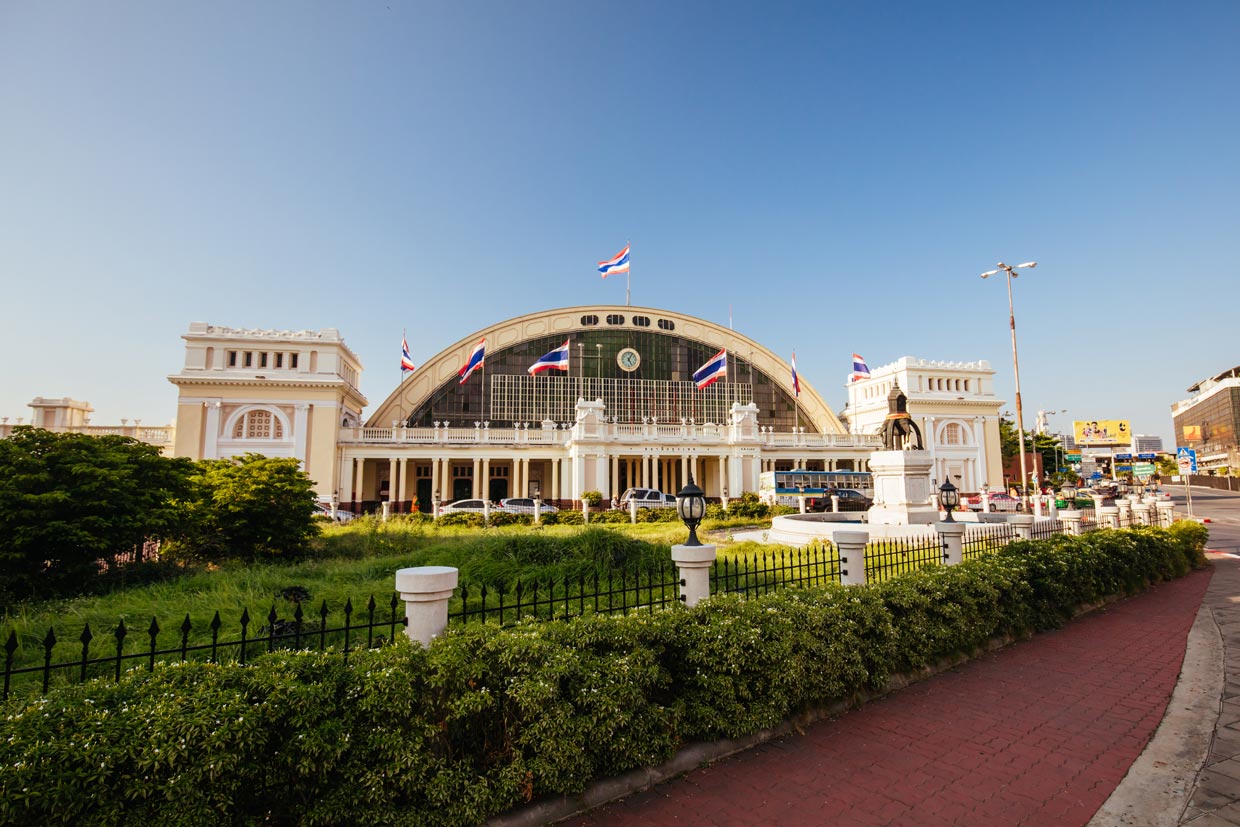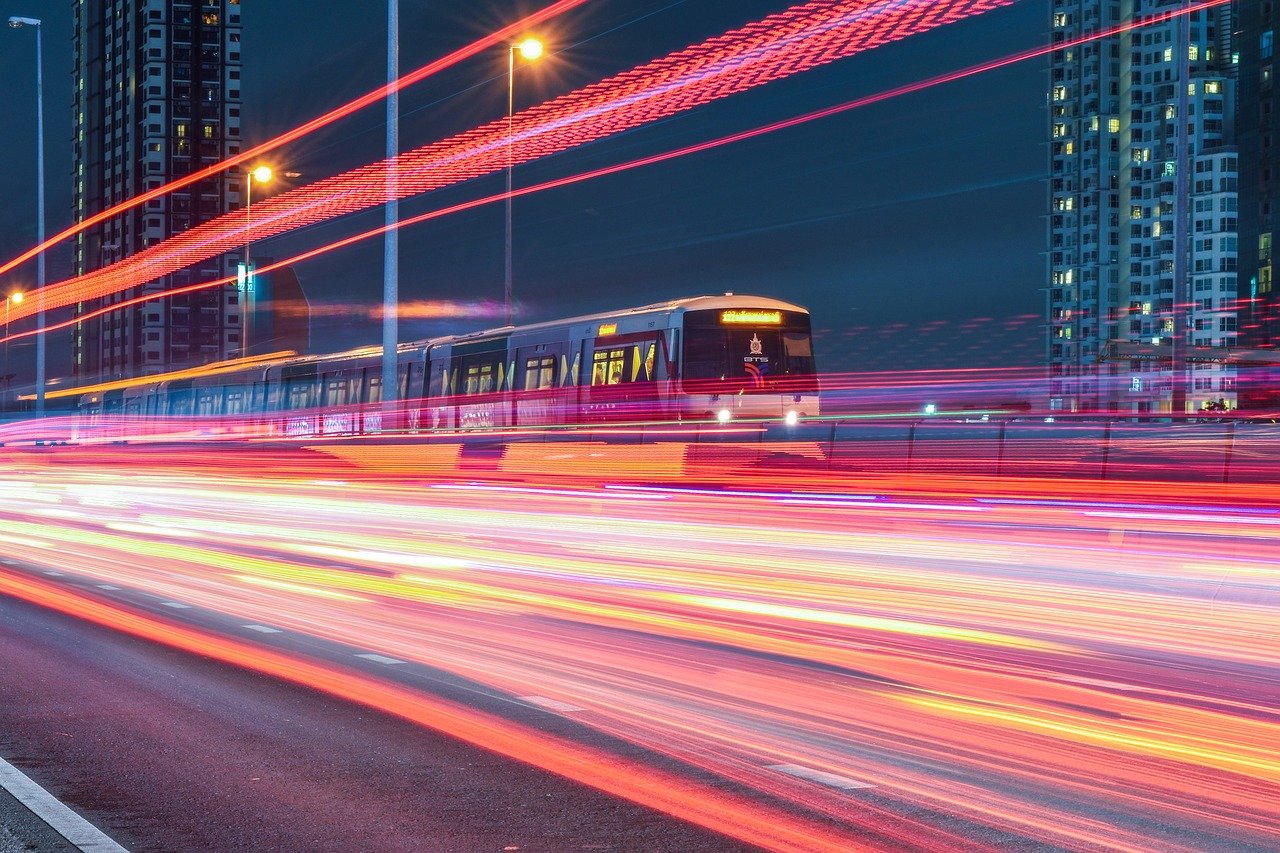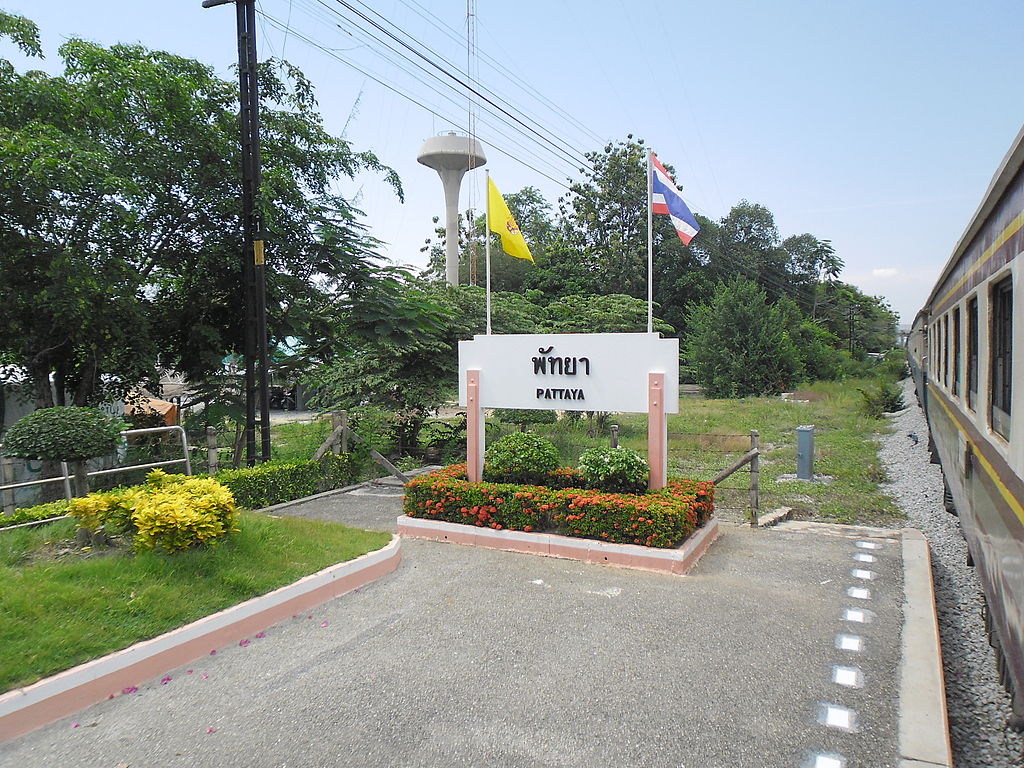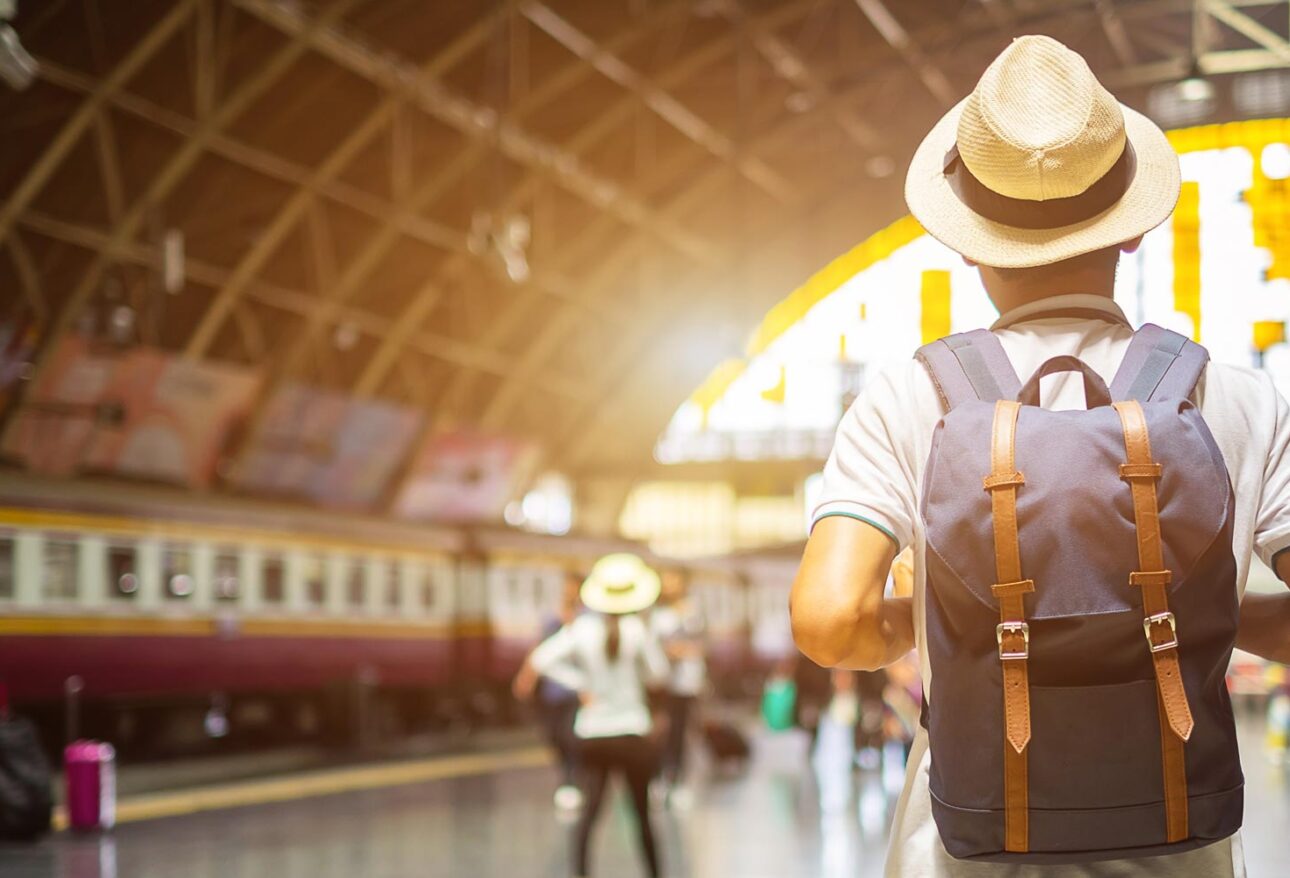The Bangkok to Pattaya train route is a popular travel option for tourists looking to explore the vibrant coastal city of Pattaya from Thailand’s bustling capital, Bangkok. This route is served by the State Railway of Thailand and offers an affordable and scenic journey between these two destinations.
Pattaya, mostly because of its proximity to Bangkok and nightlife hobbies, is one of the finest tourist destinations. It’s about 150 km (93 miles) from the capital of Thailand, Bangkok, and it takes only a few hours to get there.
What are the best ways to get to Pattaya? There are different ways to reach Pattaya, from minivans to buses and rented cars. However, train travel seems to be a proper choice for being fun and affordable for foreign visitors. Trains are usually slow and they stop at many small stations. Still, it is a great choice, and it will give you a view of the region that few foreigners have seen.
[timetable agent=”8132109″ from=”Bangkok” to=”Pattaya” lang=”en”]
Distance
The distance between Bangkok and Pattaya by train is approximately 150 kilometers.
Travel Time
The travel time can vary depending on the type of service chosen. The standard trains typically take around 3 to 3.5 hours to cover the distance. However, travelers need to note that delays can occur, and the actual travel time may be longer due to operational reasons.
Route Description
The train departs from Bangkok’s Hua Lamphong Railway Station, the main terminal that connects the capital to various parts of the country. From there, it travels southeast, passing through the suburban sprawl of Bangkok and into the more rural areas of Chachoengsao and Chonburi provinces before arriving in Pattaya.

The route is renowned for its picturesque views, especially as the train nears the coastal area, where passengers can catch glimpses of the Gulf of Thailand. The journey provides an authentic experience of Thailand’s varied landscapes, from bustling cityscapes to tranquil countryside and coastal vistas.
Service Types
There are different types of services running on this route, including rapid and express trains. Some services may offer first-class, second-class, and third-class options, with varying levels of comfort and amenities. First-class cabins are air-conditioned with comfortable seating, while second and third classes are more basic and typically feature fan-cooled carriages with bench seating.
There are two direct train services from Bangkok to Pattaya, and both of them depart from Bangkok train station (Thai: สถานีรถไฟกรุงเทพ), also known as Hua Lamphong Railway Station (Thai: สถานีหัวลำโพง). These trains arrive at Pattaya Railway Station (Thai: รายชื่อสถานีรถไฟ สายตะวันออก). If you are okay with leaving Bangkok before 7 AM, these trains are a great choice.
| Train | Bangkok | Pattaya | Service | Ticket Fee |
|---|---|---|---|---|
| 997 | 06:45 | 09:13 | Rapid | 6.5$ -14$ |
| 283 | 06:55 | 10:34 | Ordinary | 1.5$ – 3$ |
Train 997 (Rapid)
This train operates on weekends and holidays and leaves Bangkok at 6:45 AM. This air-conditioned train is scheduled to arrive in Pattaya at 9:13, in much less time compared to train #283. After that, it will go to its final stop, Ban Phlu Ta Luang railway station (Thai: สถานีรถไฟบ้านพลูตาหลวง) in Sattahip (Thai: สัตหีบ) district in Chon Buri (Thai: ชลบุรี). This final stop will be reached at 9.50 am. The train will depart Ban Phlu Ta Luang at 3:50 PM and will reach Pattaya at 4:26 PM. It is expected to arrive in Bangkok at 6:32 PM.
Second-class tickets for Train 997 typically cost around 220 Baht (around USD 6.50), while first-class tickets can cost around 480 Baht (around USD 14)
Train 283 (ordinary)
Only runs on weekdays, leaving Bangkok at 6:55 AM. It is expected to arrive in Pattaya at 10:35 AM, in about 3 hours and 40 minutes. The train from Pattaya to Bangkok departs from Pattaya Station at 02:21 PM and ends its journey in Bangkok at 06:25 PM. Second-class tickets for Train 283 typically cost around 50 Baht (around USD 1.50), while first-class tickets can cost around 100 Baht (around 3 USD). Some say they do not expect too much from the first class, considering that the carriages from train #283 are all fan-cooled with no air conditioner. However, the windows are open during the trip.
Keep in mind that both trains can have unexpected delays, so it’s always best to check the latest information before you travel. You can do this by visiting the website of the State Railway of Thailand (SRT) or using a third-party booking website or app.
Where to purchase tickets
Tickets for the Bangkok-Pattaya train can be purchased at the ticket counters of Hua Lamphong Railway Station in Bangkok. For added convenience, passengers can also book tickets online through the official State Railway of Thailand website or through authorized travel agencies. Online booking can be a preferable option as it allows travelers to secure their seats in advance, especially during high season or on weekends when trains are more likely to be fully booked.
Boarding
Before boarding, ensure you have your ticket and passport (for identification purposes) readily available. It’s also wise to confirm the platform number for your specific train, as there may be multiple trains departing around the same time. Platforms are reached via underpasses or overpasses, and porters are available to assist with luggage for a small fee.

As with any train travel, it’s important to keep an eye on your belongings, listen for announcements regarding your train, and be prepared for the boarding process, which can be quite quick and sometimes a little chaotic due to the number of passengers. Once on the train, settle in and enjoy the journey to Pattaya.
Hua Lamphong is the local name for Bangkok’s Railway Station, which is identified as the main railway station for traveling from Bangkok to the rest of the country. In other words, it gives intercity and international train services in Thailand. All of Thailand’s train lines depart from or arrive at Bangkok Railway Station, except for the line to Kanchanaburi. This station is located in the center of the Pathum Wan (Thai: ปทุมวัน) District, close to Chinatown and 350 meters (less than half a mile) from the Chao Phraya, the main river of Bangkok.
The Railway Station map can be noticed at the station’s front if you’re looking for information. On the right side of the station concourse, a Train Information Office is located. You can ask your questions about train travel from Bangkok. Remember that booking information is not possible there. There is a separate ticket office for foreign travelers located at the top left-hand corner of the railway station, giving you access to buy your suitable ticket with two different kinds of payments, including cash and payment by credit card.
How to Reach the Bangkok Railway Station?
There are several ways to reach the Bangkok Railway Station. The easiest way to get to the Railway Station is by taking the MRT Metro to Hua Lamphong MRT Station (Thai: สถานีหัวลำโพง), using Exit 4. There are also public buses that can take you to the station. Taxi can be considered as the fastest option, but on top of that, it is the most expensive. Note that always remember to ask the taxi driver to turn on the meter. Overall, it’s not hard to get there.

Facilities at Bangkok station
Bangkok’s Railway Station holds lots of facilities from restaurants to shops, fulfilling any possible need for a foreign traveler. In the middle of the station, there is a big waiting area for passengers. Shops, ticket counters, and restaurants surround this place.
Shops
Small shops and convenience stores sell an appreciable amount of snacks, foods, medicines, magazines, etc. You can always find a place where to buy regular stuff. The only thing you have to do is to look for the signs or ask a random person to find the small shops around.
Food
Various food stalls and cafés sell all kinds of takeaway foods and drinks for travelers who want to sit and enjoy a snack or a quick meal while waiting for the train. You literally can’t decide what to eat. Besides food courts that sell various inexpensive Thai Food dishes, there is a KFC branch, a noodle shop, 7-Eleven, Mr. Bun, Dunkin Donuts, and Black Canyon Coffee. If you have time, there are also local restaurants near the station.
Lost Luggage
At the front entrance of Bangkok Railway Station, there is luggage storage. The left luggage office is open daily from 4:00 am to 11:00 pm.
Thai Railway Museum at Bangkok Train Station
You may not know that there is a museum at Bangkok station. The museum is open Tuesday to Saturday from 10:00 AM to 18:00 except for public holidays. It’s completely free and doesn’t take that much to visit. Donations are welcomed, though!
Other facilities
There are a few ATMs of different banks available for the passengers.
Public toilets are also available for a small charge of 3 THB (10 cents).
Pattaya Railway Station (Thai: รายชื่อสถานีรถไฟ สายตะวันออก) is located in Bang Lamung district (Thai: อำเภอบางละมุง) of Chon Buri, about 3 kilometers (1.8 miles) away from central Pattaya. It is managed and overseen by the State Railway of Thailand. There is also a phone number, giving you access to confirm arrival and departure times.

How to reach Pattaya Railway Station?
Being in the town of Pattaya, travelers can hire a taxi or motorcycle taxi to go to Pattaya Railway Station directly.
How to buy tickets?
An online train ticket booking facility has not been provided by the State Railway of Thailand yet. Therefore, you have to buy them at the mentioned train stations.
Facilities at Pattaya Railway Station
When the train arrives at Pattaya Railway Station, travelers can expect to transfer vehicles such as local minibusses and motorcycle taxi services to take them to their hotel or other destinations. These vehicles, waiting at the station, are ready to take you anywhere you desire in Pattaya city.
Pattaya Railway Station holds a fair number of facilities. Besides sheltered waiting areas and benches, there are, of course, a Ticket counter, small food stalls, parking space, and a toilet.
Interesting places near Pattaya Railway Station
There are many places near Pattaya Railway Station that you can visit during your travel to Pattaya. Some of them are mentioned below:
Sanctuary of Truth in Pattaya
The Sanctuary of Truth (Thai: ปราสาทสัจธรรม) is a Hindu-Buddhist temple and museum in Pattaya. It is fair to call it the most iconic structure in Pattaya. The details in all of the carved teak wood in a 105-meter-tall hall are truly magical. These carves reflect the ancient vision of the earth, ancient knowledge, and Eastern philosophy. They are also a reflection of nature as the woods are unprotected, and there is a constant need to replace the woods. It was designed by the Thai businessman Lek Viriyaphan in the Ayutthaya style.
Even if you’re not a religious person, this building gives you an incredible feeling of peace and calmness; but if you’re not a fan of calmness, there are elephant and horse rides available outside of the building. You can buy souvenirs from souvenir stalls located there either. Besides, you can enjoy Thai dancing and martial arts shows and eat at the restaurant.
The Sanctuary of Truth is located on the coast, and it is about 6 kilometers (3.7 miles) to the northwest of the Pattaya Railway Station. The opening hours are 8:00 AM to 5:00 PM. You have to buy entrance tickets. It costs 450 THB (about 15$) for adults and 225 THB (4.6$) for children. You can call +66 (0) 836 7229 for further information.
Teddy Bear Museum in Pattaya
About 4.2 kilometers (2.6 miles) away from the Pattaya Railway Station, the Teddy Bear Museum of Pattaya has been designed as a dragon boat as large as 40 meters by Korean designers. Enjoy taking pictures with more than 2000 Teddy Bears in different sizes. Teddy Bear Museum is open from 09:00 AM to 10:00 PM. It costs 500 THB (16.5$) for adults and 300 THB (about 10$) for children. There is also a gift shop available there.
Packing Advice
- Comfortable Clothing: Opt for loose, comfortable clothing, considering Thailand’s tropical climate. Air-conditioned carriages can be chilly, so bring a light sweater or shawl.
- Food and Water: While many trains offer food and beverage services, it’s a good idea to bring your water and snacks, especially for longer journeys or if you have dietary restrictions.
- Entertainment: Pack a book, download movies, or have music and headphones ready for entertainment during the journey.
- Power Bank: Keep a power bank handy to charge your electronic devices, as not all trains have power outlets available.
- Essential Toiletries: A small travel kit with hand sanitizer, wet wipes, and tissues can be very useful, particularly on longer trips.
- Travel Pillow and Blanket: For overnight or long-distance travel, a travel pillow and small blanket can make your journey more comfortable
- Cash: Keep some cash on hand for purchasing items on the train or at small station shops where credit cards may not be accepted.
Cultural Etiquette on Thai Trains
- Respectful Attire: Dress modestly, especially if you plan to disembark at temples or religious sites along the way.
- Quiet Carriages: Some trains have designated quiet carriages. If you are seated in one, keep noise to a minimum to respect fellow passengers.
- Greetings: A polite ‘wai’ (a bow with palms pressed together) is a respectful way to greet train staff or fellow passengers.
- Shoes Off: If you are in a sleeper carriage, it’s customary to take your shoes off before entering, especially if you are climbing onto an upper bunk.
- Space Sharing: Be mindful of the space you occupy and try not to sprawl your belongings onto other seats or in aisles.
Safety Considerations
- Keep Valuables Secure: Always keep your valuables, such as passports, money, and electronics, in a secure bag and within sight. Consider using a money belt or a hidden pouch.
- Luggage: Use the overhead racks for small bags and keep larger luggage close to you. If possible, secure your bag to the rack or your seat with a small lock or cable.
- Be Alert: Pay attention to your belongings at stops, as thieves can take advantage of the brief chaos when passengers are boarding or alighting.
- Travel Insurance: It’s recommended to have travel insurance that covers theft, loss, and medical issues.
- Health Precautions: Bring hand sanitizer and use it regularly, especially after handling money or touching common surfaces like handrails.
- Emergency Awareness: Familiarize yourself with the train’s layout and note the location of emergency exits upon boarding.





